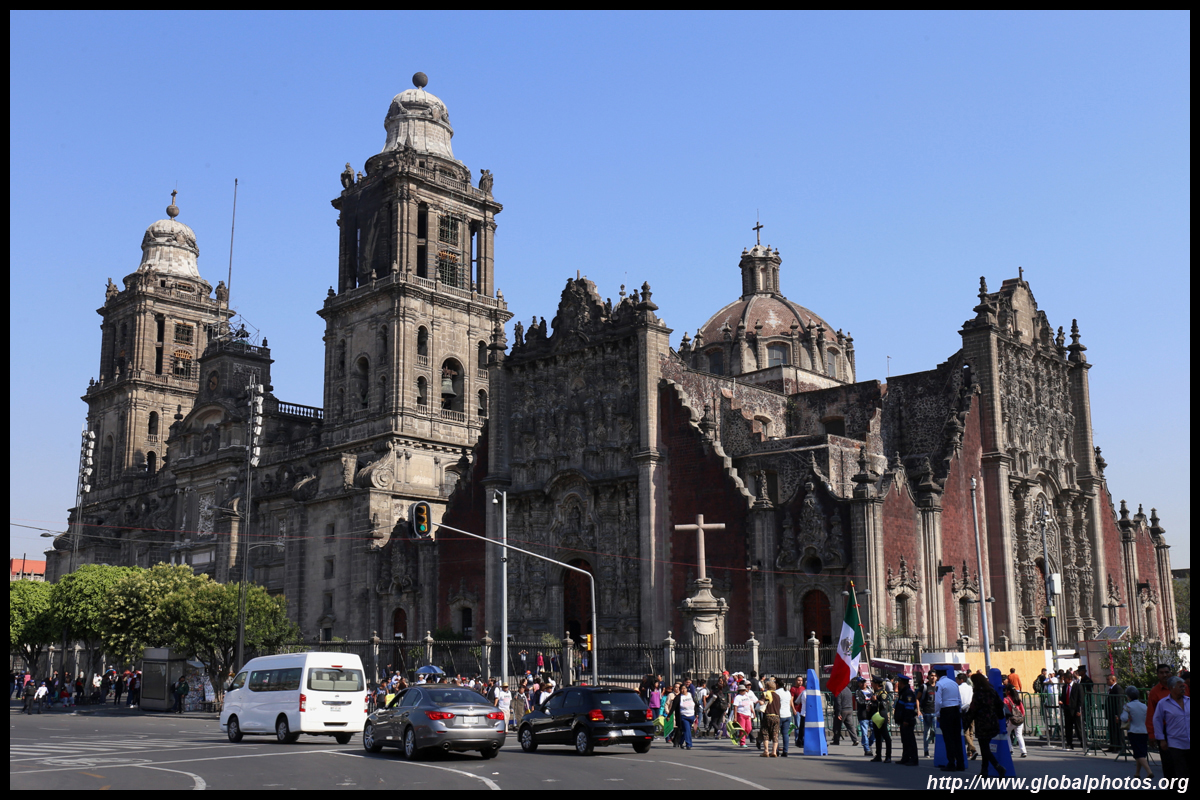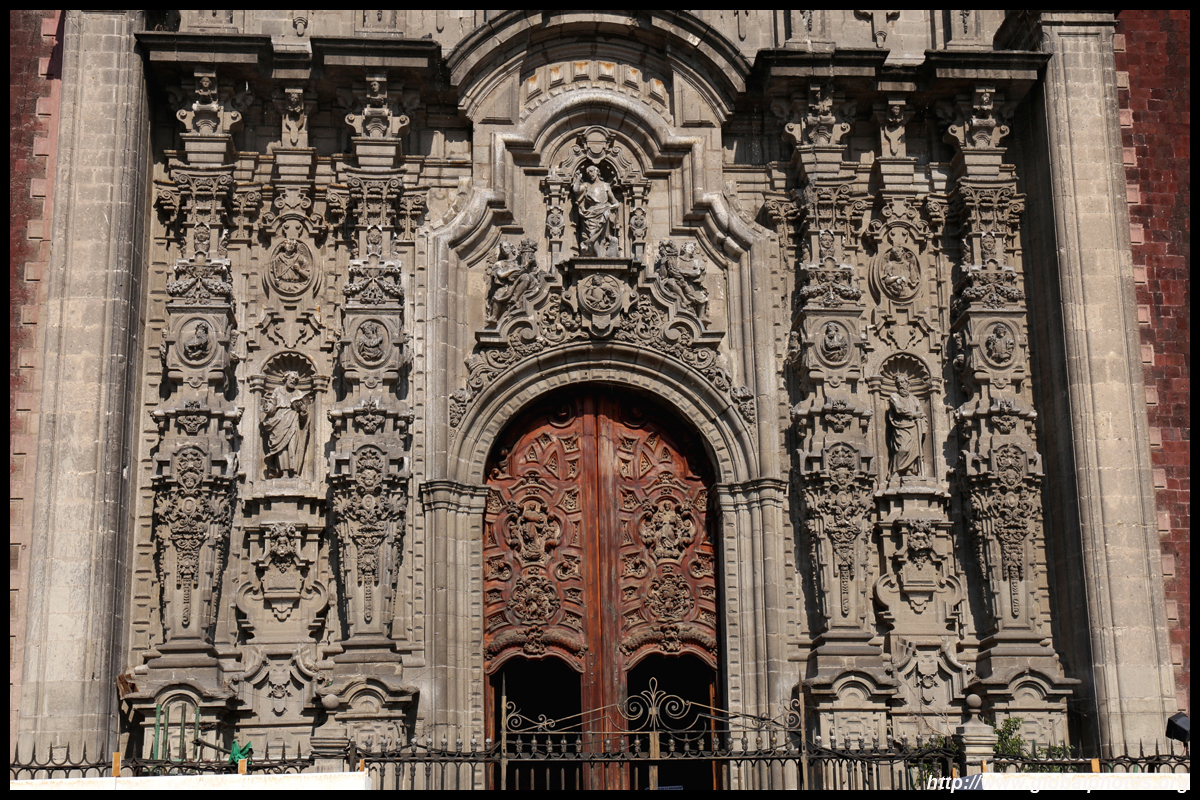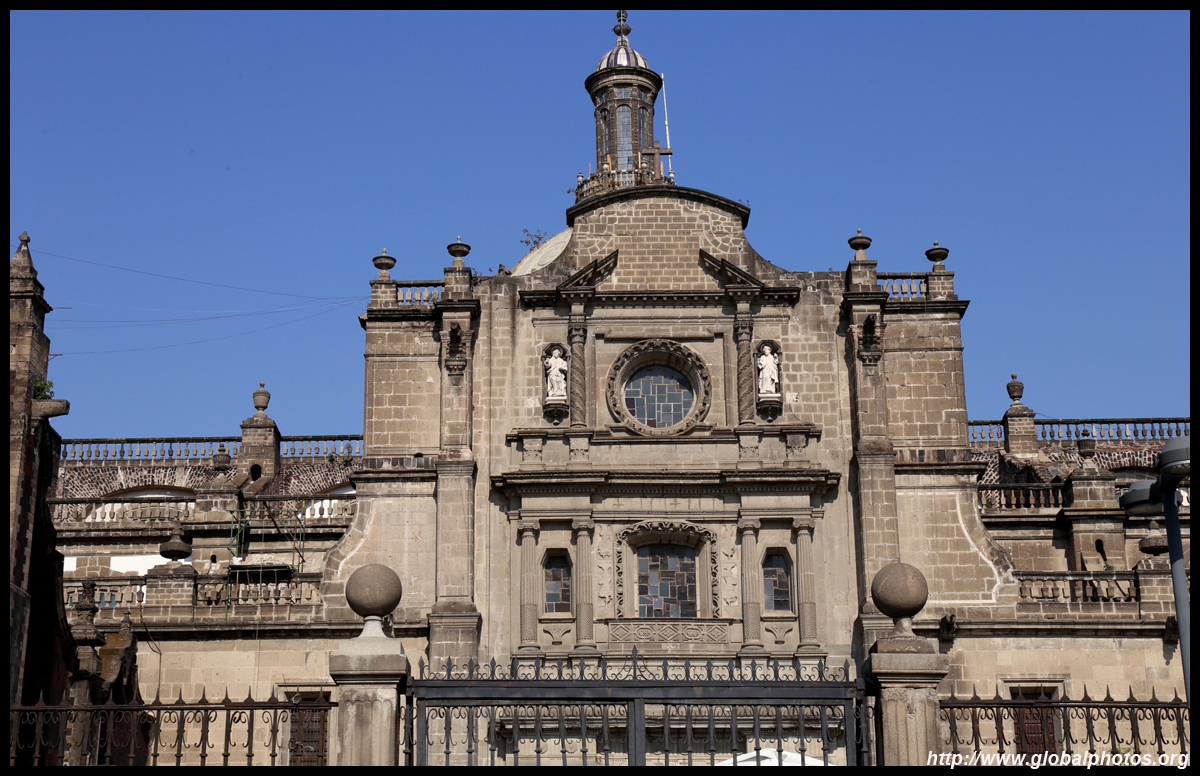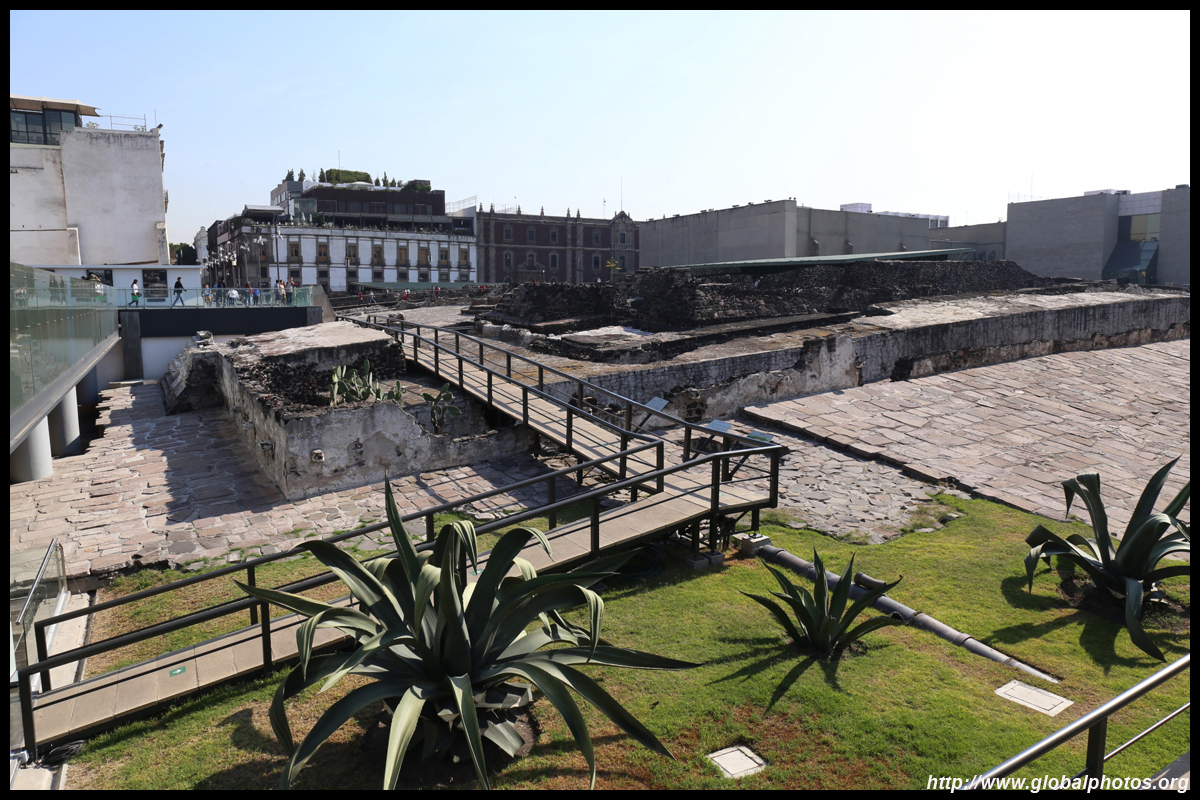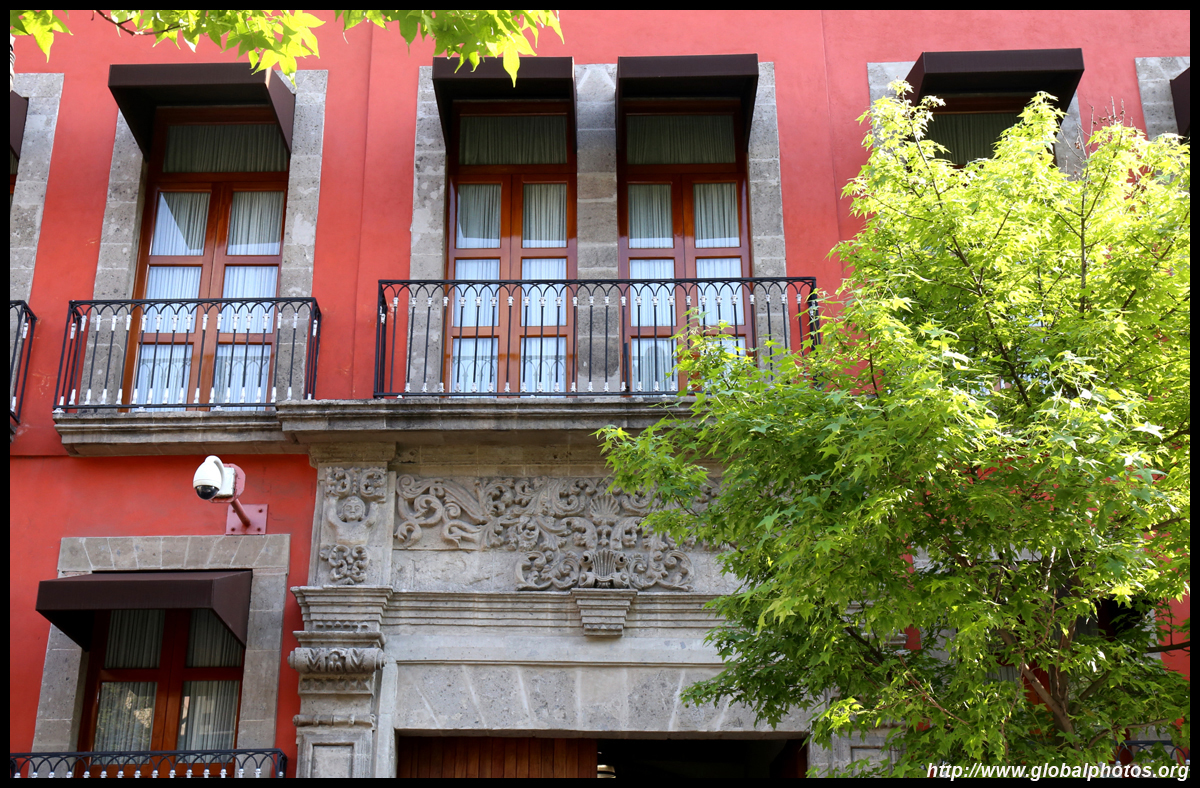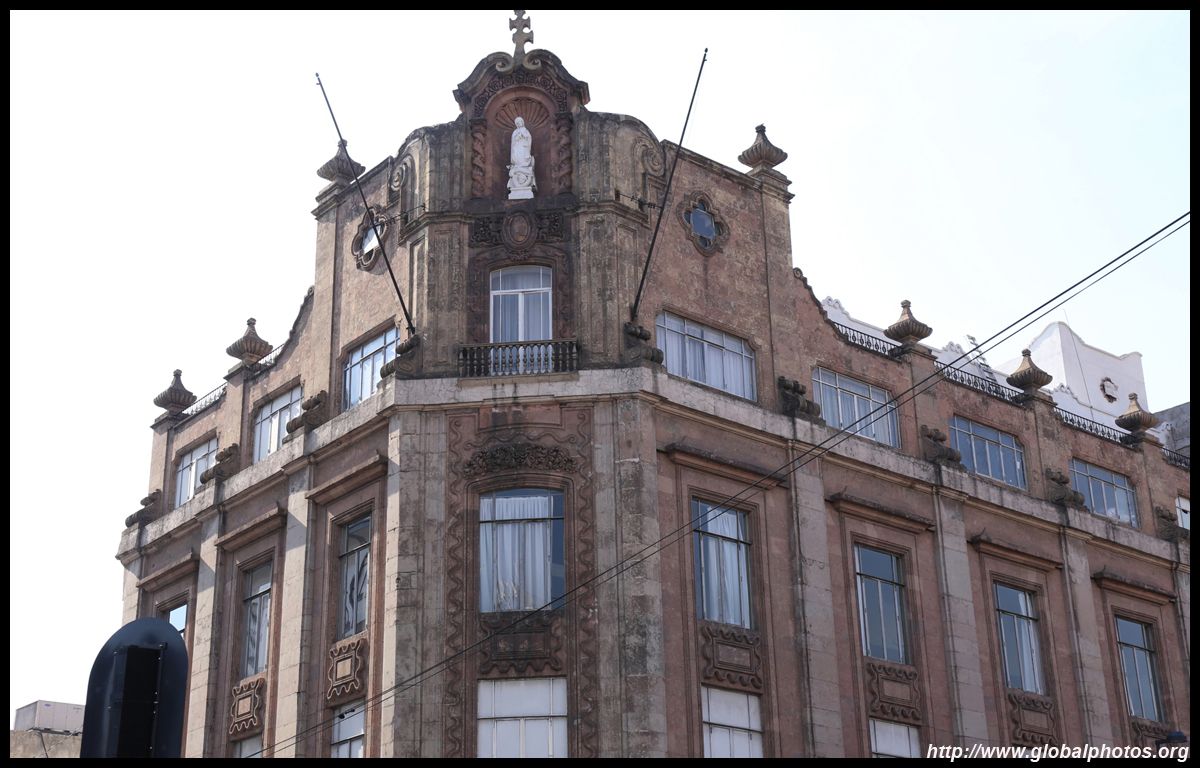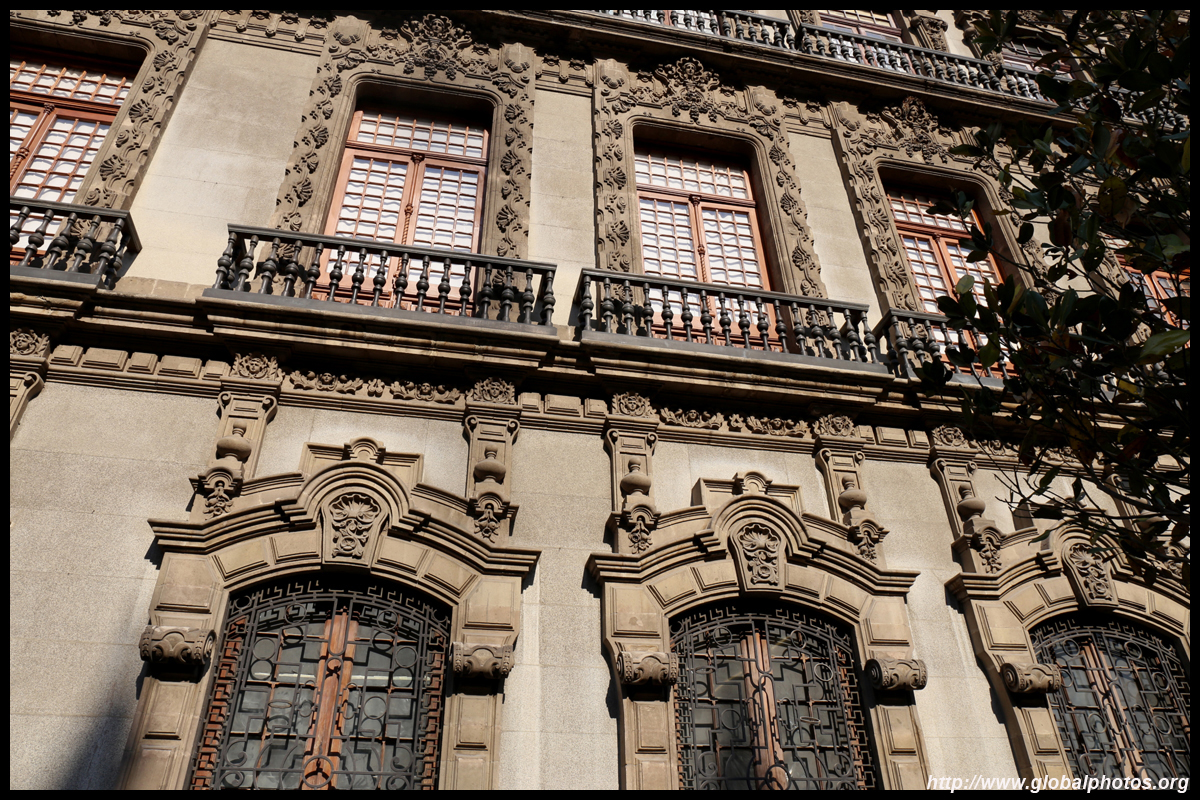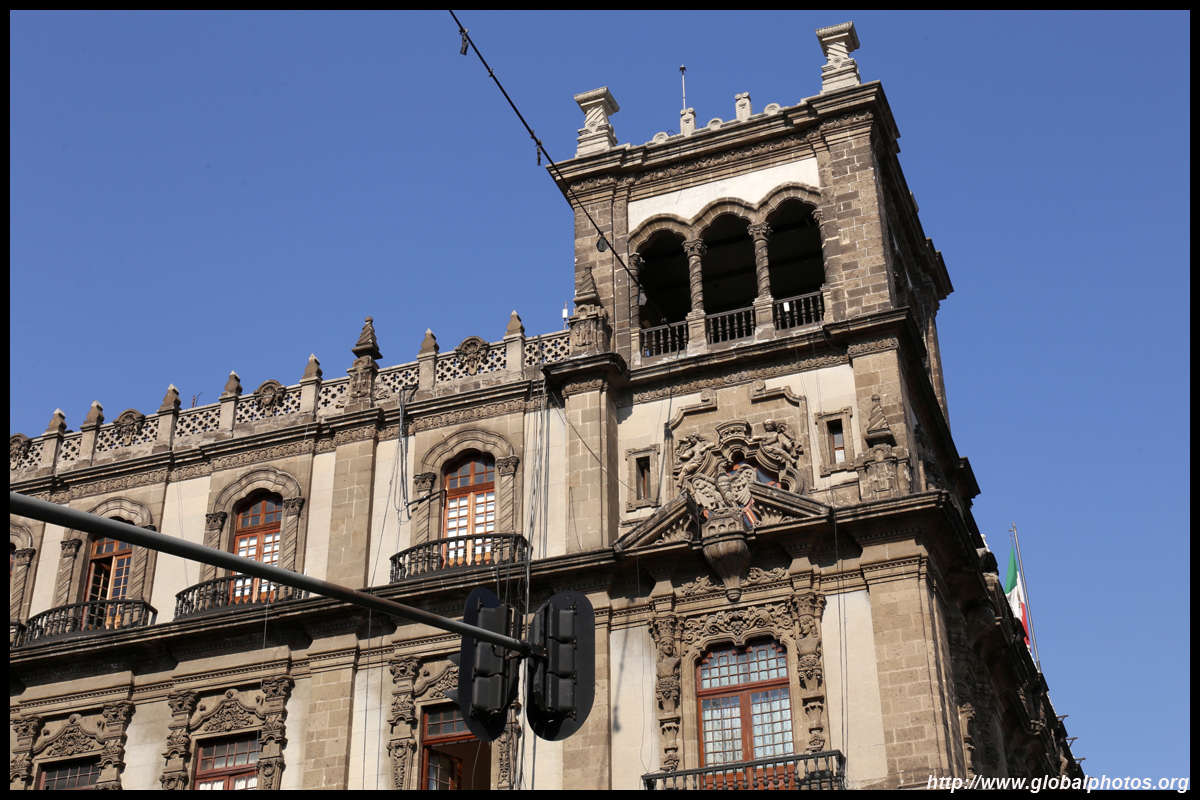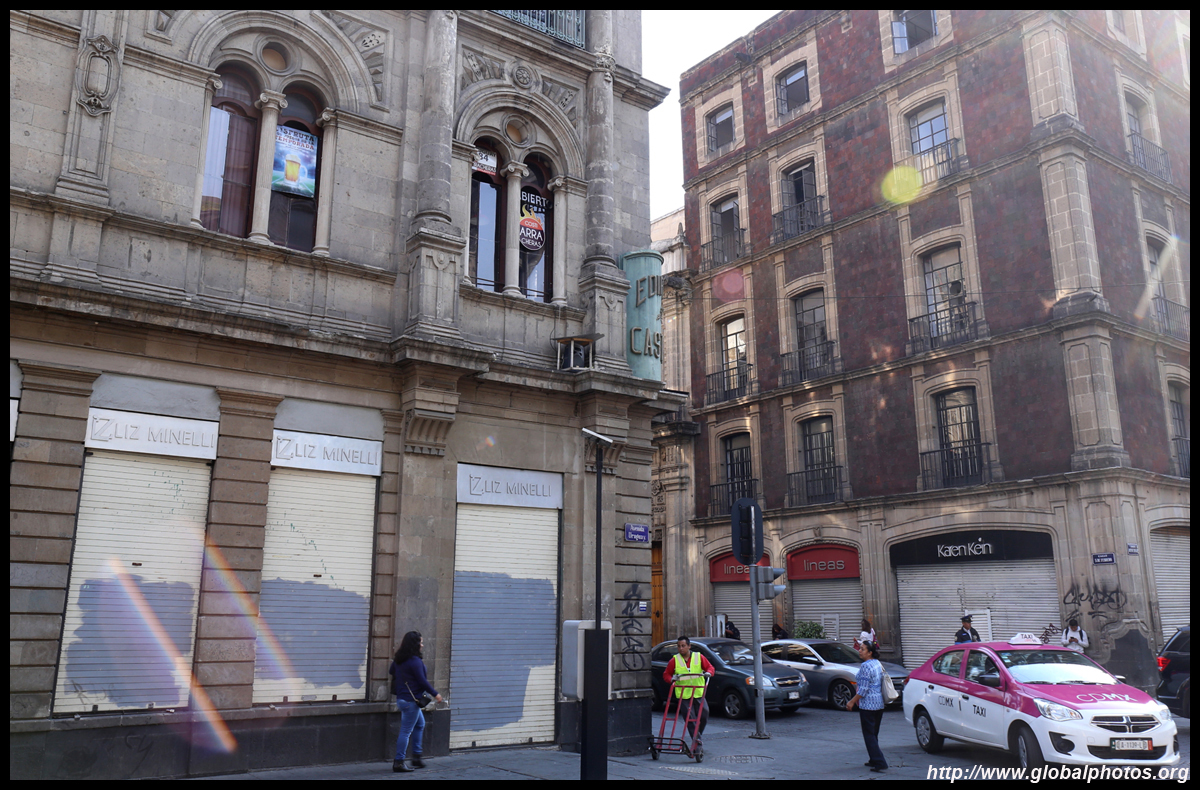Mexico City Photo Gallery - Historic Centre
The historic centre retains its colonial charm. Start at Zocalo, the main square that was already important in Aztec times. When Tenochtitlan was founded in the 14th century, it was an island and there was a lake around it. The Spanish drained and filled the lake after they took over in the 16th century.Catedral Metropolitana dominates the north side of the square. Construction began in 1573 and the builders wanted something big to symbolize its importance to Spain. It exhibits multiple architectural styles from Baroque to Neoclassical. The interiors are just as amazing and spacious.
Ruins of the old Aztec capital are on display just east of the cathedral. Templo Mayor's excavation began in 1978 and you can now see the foundations of a great temple. Back in those days, a new temple was built over the old one every 52 years, and historians have counted 7 here.
Palacio Nacional occupies the eastern end of Zocalo. Once home of the Spanish viceroy in the 16th century, it is now a popular attraction for its Diego Rivera murals. The main staircase showcases Mexico's history in great detail.
The area has many historic buildings, showcasing its rich European colonial heritage.
Plaza Santo Domingo is a small and cozy plaza with mansions surrounding it and a Baroque church on the north side. The church is on the site of the country's first Dominican monastery.
On the east side is the Ministry of Education building, or SEP, which is home to Rivera's first murals. The murals were the idea of the Minister of Public Education back in the 1920s to encourage civic pride and a sense of history to the illiterate. The whole building's corridors are covered with murals, an overwhelming feast to the eyes.
The building stretches across several courtyards, and seem fairly devoid of tourists.
Back outside, there is no shortage of art deco or vibrant streetscapes.
The Museo Nacional de Arte spans over 400 years of Mexican art. Outside, a small plaza is decorated with the bronze statue El Caballito, or Spain's Carlos IV.
The Correo Central is the monumental central post office. Built in 1908 by the same designer as the neighbouring Palacio de Bellas Artes, it has intricate wood carvings and staircase railings cast in Florence.
The Palacio de Bellas Artes was designed to be a beautiful Art Nouveau landmark. Completed in 1934, it continues to be an arts performance venue today.
Next door, the pedestrian street Madero begins. Although commercialized today, it was once home to the city's aristocrats. The landmark you can't miss is Torre Latinoamericana, built in 1956 with an observation deck above for views of the city and its surrounding mountains.
Continuing down Madero, San Francisco church sits on what was the first Franciscan mission to the country.
The Casa de los Azulejos is now a department store. The exterior is decorated with blue and white tiles dating back to the early 18th century. The centre courtyard is now a bright dining area.
More imposing buildings line the rest of the street.
Scattered amongst the streets are many bakeries selling mouth-watering snacks and breakfast.
| |||
Coin and bank note images from the Banco de Mexico.
